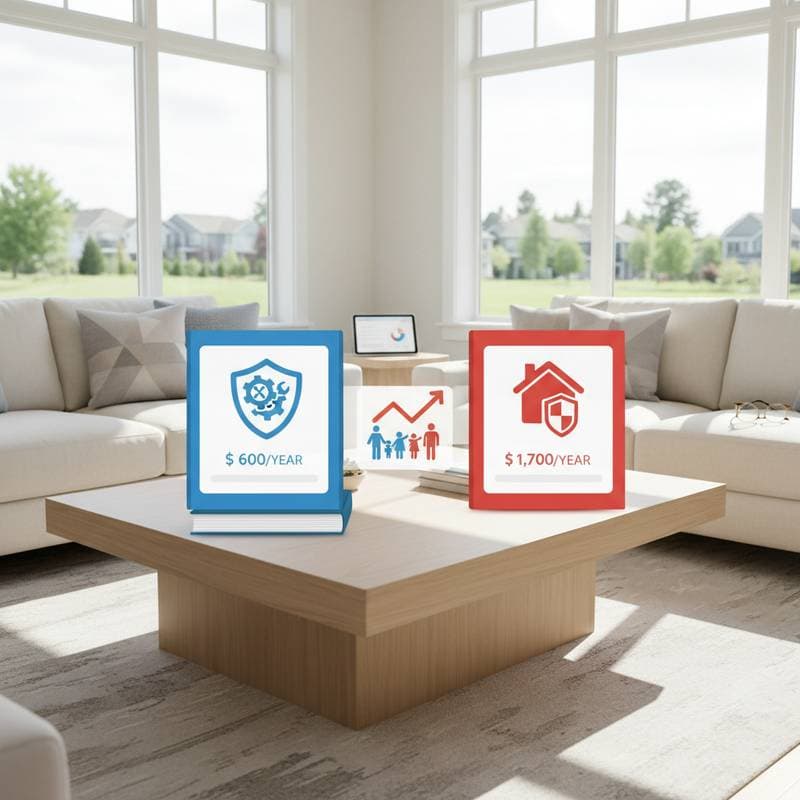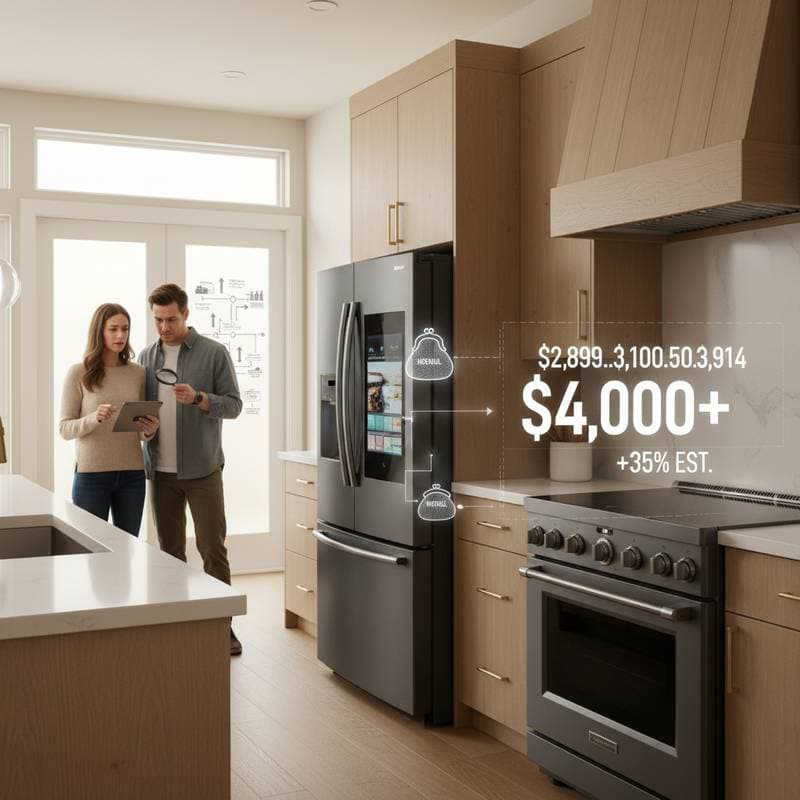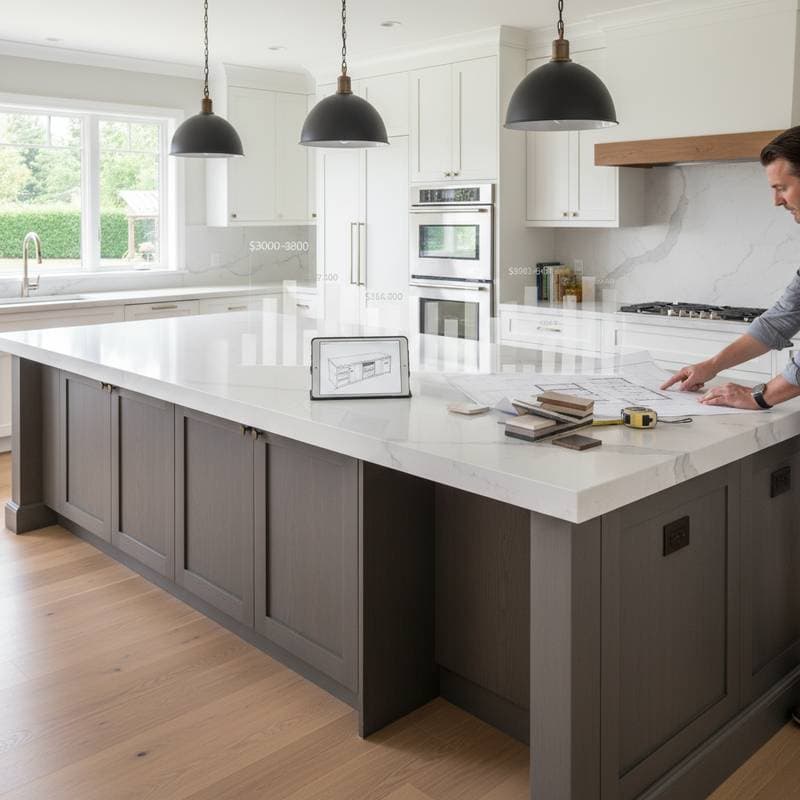Home Warranty Costs Compared to Insurance: A Practical Guide
Home warranties shield homeowners from unexpected repair bills by covering the breakdown of essential systems and appliances due to normal wear. These plans generally range from $350 to $900 annually, with a typical cost of $600 for basic coverage. By contrast, home insurance policies average $1,700 per year and focus on protecting the home's structure from perils like fire or theft.
Several elements shape home warranty prices, including the extent of coverage, the size of the property, and the provider's reliability. Factors such as location and the age of the home also play a role, as older setups carry greater failure risks. Home insurance costs hinge more on the property's value, estimated replacement expenses, and area-specific hazards like severe weather or crime rates.
Selecting the appropriate mix of warranty and insurance coverage can lower expenses by hundreds of dollars each year while guarding against financial shocks. A solid home warranty often cuts repair costs by up to 50 percent versus handling breakdowns without coverage. Grasping the pricing details of both options empowers homeowners to make informed decisions that support lasting security and tranquility.
Breaking Down the Costs
Home warranties operate as service contracts paid monthly or yearly, targeting repairs for major systems and appliances. Home insurance functions as an annual premium tied to the home's worth and vulnerability to loss.
How Home Warranties Are Priced
Leading providers like American Home Shield, Choice Home Warranty, and Select Home Warranty structure plans from $30 to $75 monthly. The standard yearly expense lands at $600, plus a service call fee of $60 to $125 each time a claim arises.
Budget options at the lower end average $420 annually. Median plans hover around $600, and top-tier selections climb to $900 or $1,000. Larger homes incur extra charges: add $20 to $40 per year for every additional 500 square feet, as more space means more items to cover. A 2,000-square-foot home might total $580 yearly, whereas a 3,500-square-foot one could hit $720.
How Home Insurance Is Priced
Insurance rates vary based on home value, geographic location, and policy limits. Typical premiums fall between $1,500 and $2,000 annually, encompassing dwelling and liability safeguards.
Lower-end policies average $1,200, while upper-end ones surpass $2,400. Properties in high-risk zones, such as coastal regions, often double those figures. Premiums factor in replacement costs, local construction standards, and past claims. For each $100,000 added to the dwelling value, expect an increase of about $250 per year.
Coverage Levels and Quality Options
Entry-level warranty plans address fundamentals like heating, ventilation, air conditioning (HVAC), electrical, and plumbing systems, starting at $35 monthly with minimal appliance inclusion.
Mid-tier options, offered by companies like Liberty Home Guard or First American Home Warranty, run $50 monthly and extend to kitchen essentials such as refrigerators, ovens, and washers. Add-ons for roof leaks or septic systems cost an extra $8 to $15 monthly.
High-end plans top $75 monthly, covering luxury appliances, electronics, and full replacements. These frequently include a 90-day workmanship guarantee, adding significant worth for homes with dated equipment.
Insurance tiers start with basic protection against fire, theft, and storms. Upgraded versions provide broader replacement options and personal belongings coverage, boosting premiums by 20 to 30 percent.
Regional and Situational Influences
Local labor costs, accessibility, and climate extremes impact both types of coverage. In states like Florida, Texas, and California, with demanding weather and aging homes, warranty prices rise 10 to 15 percent from heightened repair needs.
Insurance sees steeper jumps in wildfire- or hurricane-prone areas, with differences exceeding 40 percent between urban and rural settings.
Coverage Types and Full Pricing Overview
Standard Home Warranty Coverage
Basic plans cover:
- HVAC systems
- Electrical components
- Plumbing lines
- Water heaters
- Essential kitchen appliances
Priced at $30 to $45 monthly with a $75 service fee per claim, these suit newer homes with straightforward needs. Technicians typically arrive within 24 to 48 hours.
Expanded Home Warranty Coverage
Advanced packages include:
- Full appliance suite: refrigerator, dishwasher, oven, washer, dryer
- Garage door openers and ceiling fans
- Roof leak repairs and sump pumps
- Optional add-ons for pools or spas
These range from $60 to $80 monthly, with a $100 service fee. Though 30 percent pricier than basics, they offset costs dramatically, as a single HVAC replacement might exceed $3,000.
Standard Home Insurance Coverage
Core policies provide:
- Dwelling protection for rebuilding the structure
- Liability for on-property incidents
- Safeguards for personal items
Enhanced versions incorporate flood, earthquake, or extra liability options, raising costs 25 to 40 percent. A baseline $1,700 policy could climb to $2,300 with these additions.
Bundling and Add-On Options
Warranty bundles feature:
- Appliance-focused: $20 to $35 monthly
- Systems-only: $25 to $40 monthly
- All-in-one: $50 to $75 monthly, yielding 15 percent savings over individual purchases
Insurance multi-policy discounts, such as pairing with auto coverage, trim 10 to 20 percent from bills.
Weighing Professional Coverage Against Self-Management
Self-Funded Repair Approaches
Some homeowners build a reserve for fixes instead of buying warranties. Routine upkeep runs 1 to 2 percent of the home's value yearly, or $3,000 to $6,000 for a $300,000 property.
Typical outlays include:
- HVAC parts: $200 to $800
- Water heater swap: $1,200
- Fridge fixes: $350
- Leak repairs: $150 to $400
Basic tools add $150 to $300 upfront, but errors from inexperience can inflate expenses further.
Benefits of Professional Plans
Warranties deliver reliable service through approved contractors and swift responses. Insurance handles major disasters like fires or storms.
Homeowners often dedicate 20 to 30 hours yearly to upkeep; professional plans handle this for a predictable fee. Built-in guarantees on repairs save $200 to $500 per incident.
Choosing the Right Path
Opt for a home warranty if appliances surpass five years old or if steady budgeting trumps hands-on control. Rely on insurance for home integrity and legal protections. Pairing them forms a robust shield against varied threats.
Strategies to Lower Expenses
Optimal Timing for Purchases
Warranty providers extend 10 to 15 percent off during off-peak seasons. Insurance renewals gain 5 percent reductions via multi-year terms. Early shopping or policy combinations amplify these benefits.
Effective Comparison Methods
Gather quotes from three or more companies to evaluate coverage and fees. Secure reduced service calls by committing to extended terms. Annual payments sometimes yield a free month or $50 credit.
Pre-Coverage Steps
Record appliance details like age and models to verify plan fit. Perform simple tasks, such as filter changes or heater flushes, to avoid rejected claims. Clear instructions to technicians minimize follow-up costs.
Key Market Factors
Location-Based Differences
Insurance peaks in coastal and southern regions, while warranties hold steady across the country. City dwellers face 15 percent higher warranty fees from elevated labor and density. Rural areas might delay service due to limited providers.
Economic Influences
Inflation and material shortages have lifted rates 7 to 10 percent in select areas. Annual quote reviews counteract these shifts.
Measuring True Value
Warranties yield 120 to 150 percent return on investment for aging homes by averting big bills. Insurance preserves equity against disasters. Together, they cover routine issues and crises, optimizing overall security.
Crafting Your Home Safeguard Plan
Integrate warranties for daily maintenance with insurance for severe events to form a comprehensive barrier. This setup steadies finances and upholds property worth over time.
Assess your home's vulnerabilities first. Focus on warranties for worn equipment; bolster insurance in hazard-heavy zones. Tools like online quote comparators streamline the search for tailored fits.
Proactive choices ensure repairs or losses stay manageable. With either or both in place, you gain cost efficiencies, reduced stress, and a resilient home base.



